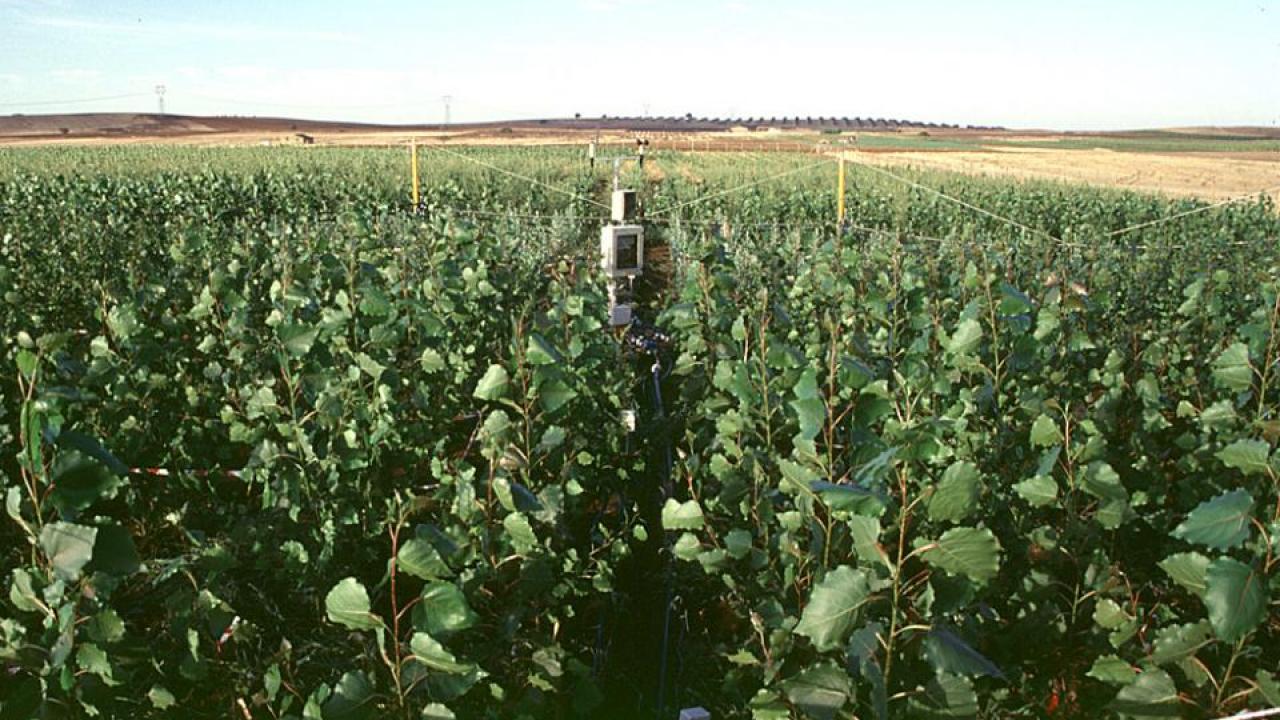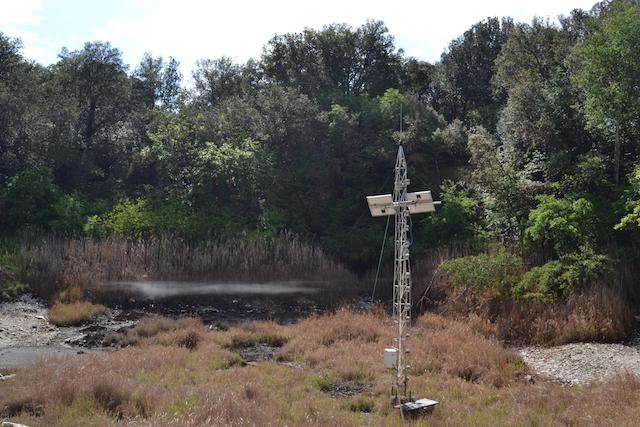
Back-to-the-Future Plants Give Climate Change Insights
Outdoor Labs Give Realistic Sense of Plant Response to Future Climate Change
If you were to take a seed and zap it into the future to see how it will respond to climate change, how realistic might that prediction be? After all, seeds that actually grow in the future will have gone through generations of genetic changes and adaptations that these “time traveling” seeds don’t experience.
Scientists from the University of California, Davis, and the University of Southampton in the United Kingdom examine that question in a study published today in the journal Global Change Biology. They found that specialized outdoor laboratories more closely resemble what happens in nature than was previously realized.
About FACE
Atmospheric carbon dioxide has been steadily rising since the Industrial Revolution and is now at the highest concentration the Earth has seen for several million years. Scientists have been investigating how plants are likely to respond to future climate change at outdoor facilities called Free Air CO2Enrichment, or FACE, where fields of crops are blasted with air containing increased amounts of carbon dioxide.
The study authors compared plant responses at FACE facilities with plant responses across 11 naturally occurring, high-CO2 springs. Plants at these springs survive extremely high concentrations of carbon dioxide, up to 1,000 parts per million in some areas, for many years over multiple generations.

“The results say, pretty surprisingly, that yes, all of those experiments we’ve done in FACE facilities are giving us a pretty good idea of how plants are likely to respond in the future,” said corresponding author Gail Taylor, a UC Davis professor and chair of the Department of Plant Sciences.
Global greening could continue
And how are plants likely to respond? Positively, Taylor said. But there’s a big caveat.
As an isolated factor, high CO2 concentrations are expected to result in more plant growth and continued global greening. Yet drought and high temperatures — both of which are expected to increase under future climate projections — can limit that growth.
“If plants are exposed to higher temperatures and drought, there will likely be negative impacts, overall, so it’s a tradeoff,” Taylor said. “But our analysis gives us confidence that plants are likely to keep responding positively to rising CO2 if no other climatic factors are limiting.”
With rising CO2, crop yields are expected to increase in northern latitudes but may decrease closer to the equator. California is expected to experience lower crop yields because of water limitations and high temperatures, while in Britain, impacts on crops will be variable.
Most of the FACE experiments have concentrated on commodity crops like soybeans, maize, wheat and rice. Specialty crops, like the nuts, fruits and vegetables grown in California, have not been studied in FACE facilities yet, but Taylor hopes to change that.
Higher carb future?
While the study did not analyze the effects of rising carbon dioxide on crop quality or nutrition, it did indicate that some crops may have higher carbohydrate content under future conditions.
“The analysis shows that it's possible to test new varieties of plants in FACE experiments before it is critical that they perform in the wider world,” Taylor said. “These ‘time-traveling’ plants that move forward and backwards across the decades can be extremely valuable in understanding how plants are likely to respond to the changes projected as a consequence of anthropogenic climate change.”
Additional authors include Jasmine Saban and Mark Chapman of the University of Southampton.
The study was supported by funding from the Natural Environment Research Council, UC Davis and the British Council.
Media contact(s)
Gail Taylor, Plant Sciences, 530-752-9165, gtaylor@ucdavis.edu
Kat Kerlin, News and Media Relations, 530-752-7704, kekerlin@ucdavis.edu